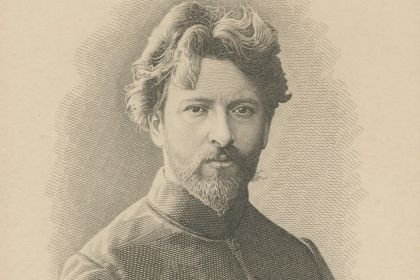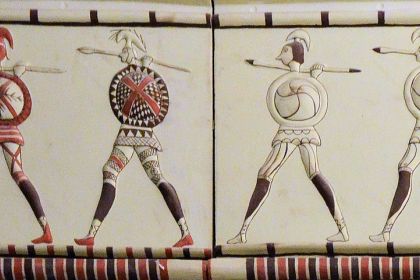Organ
Mecca for organ music created by Dieterich Buxtehude in Lübeck

Musical Company by Johannes Voorhout
The picture Musical Company by Johannes Voorhout shows baroque composer Dietrich Buxtehude playing the viol while his friend Johann Adam Reinken performs on the harpsichord with an unidentified person singing along. It is largely assumed to be an ironic self-portrait of the painter.
Dietrich Buxtehude (1637–1707) was a Danish or German organist and composer of church music, one of the most esteemed and influential composers of his time.
His exact place of birth is uncertain, and nothing is known of his early youth. It is usually assumed that he began his musical education with his father, who was an organist at Helsingborg and Helsingør, both then part of Denmark.
Buxtehude settled his main post in the free Imperial city of Lübeck in 1668 as organist of St. Mary’s Church. There he gained such fame as a composer that the city became a mecca for musicians of northern Germany. Among his visitors were even such big names as George Frideric Handel and Georg Philipp Telemann.
Buxtehude's most important and influential works are considered to be those for organ, which include toccatas, preludes, fugues, chaconnes, and pieces based on chorales. The preludes are usually brief and unlike J.S. Bach’s in having no thematic connection with the fugues that follow them.
Listen to Toccata und Fuge in F-Dur performed by Hubert Behmer at Orgel der Piuskirche in Lippstadt:
Lübeck had been the capital of the Hanseatic League, the medieval trade association of cities on the North and Baltic Seas. Even after this organization ceased to be, Lübeck still remained an important trading center.
To support the city economy, Abendmusiken—or concerts sponsored by the city’s merchants—were organized in the Church of St. Mary. Buxtehude took the initiative for the organization, modeling these concerts after the performances of the organist Jan Pieterszoon Sweelinck in the Oude Kerk in Amsterdam.
Buxtehude started writing compositions for the Abendmusiken in 1673. As the legend tells it, that work has not survived due to local fishmongers using the scores as packaging material.
Among Buxtehude fans was Johann Sebastian Bach. At the age of thirteen, he transcribed a complicated piece by Buxtehude, and in the late autumn of 1705 the nineteen-year-old Bach left Arnstadt for Lübeck to hear the renowned musician play and “to comprehend one thing and another about his art”. It was a journey of four hundred kilometers on foot, over the rugged Harz Mountains, and it paid off: Bach not only met Buxtehude but also studied under him for several months.



